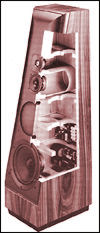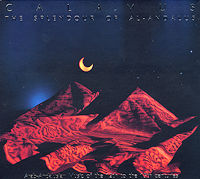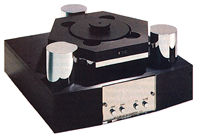LATEST ADDITIONS
Tweaks'n'Squeaks
If you read <I>Stereophile</I> regularly, you already know that all audio equipment does <I>not</I> sound the same. But did you know that a given piece of gear can sound better or worse depending upon how it's set up and used? With a few simple tweaks, you can bring out the best in your audio system.
Thiel CS3.6 loudspeaker
Choosing a loudspeaker can be difficult. Although it is easy to be seduced by a certain model's special qualities, that exceptional performance in one area is often at the expense of other important characteristics. Go with high-quality minimonitors for their spectacular soundstaging, but give up bass, dynamics, and the feeling of power that only a large, full-range system can provide. If you choose an electrostatic for its delicious midrange transparency, you may have to forgo dynamics, impact, and the ability to play loudly. Pick a full-range dynamic system for its bass and dynamics, but lose that edge of palpability and realism heard from ribbon transducers.
Berning TF-10 preamplifier
Tice R-4 TPT & Coherence ElectroTec EP-C "Clocks"
Lars recently received a device that looks and works like a $25 digital alarm clock and is said to subtly improve the overall sound of one's system. It's the ElectroTec EP-C, from a company called Coherence Industries.
As I See It: From London to Santa Fe
Recording of May 1995: Calamus: The Splendour of al-Andalus
<B>CALAMUS: <I>The Splendour of al-Andalus</I></B><BR> Eduardo Paniagua, chabbada, flutes, salterio, târ, cymbals, voice; Luis Delgado, oud, citola, guimbri, doira, târ, handclaps, voice; Begoña Olavide, voice, quanun, salterio, caraqebs, târ, darûga; Rosa Olavide, voice, rabel, viola, portative organ, cymbals; Carlos Paniagua, darbûga, t'abila, pandero, campanillas, voice<BR> M•A Recordings M026A (CD only). Todd Garfinkle, prod., eng. DDD. TT: 60:10
Mark Levinson No.26 preamplifier & No.20 monoblock power amplifier
I must admit, right from the outset, that I find reviewing electronic components harder than reviewing loudspeakers; the faults are less immediately obvious. No preamplifier, for example, suffers from the frequency-response problems endemic to even good loudspeakers. And power amplifiers? If you were to believe the older generation of engineers—which includes some quite young people!—then we reached a plateau of perfection in amplifier design some time after the Scopes Monkey Trial but well before embarking on the rich and exciting lifestyles afforded us by Reaganomics. (In the UK, it is generally felt by these people that the date coincided with the introduction of Quad's first current-dumping amplifier, the 405, in 1976.)
C.E.C. TL 0 CD transport
Fantasy review time. I first heard about the C.E.C. TL 0 in the May '94 <I>Stereophile</I> (Vol.17 No.5), in Audio Mogul Richard Schram's Manufacturer's Comment to my review of the C.E.C. TL 1. I wasn't sure if he was kidding when he threatened the world with a cost-no-object $17,500 CD transport. Just what we all need!
Gradient Revolution loudspeaker
A.C. Wente of Bell Telephone Labs was apparently the first person to get the bright idea (in the 1930s) of measuring sound transmission in a small room. A loudspeaker at one point reproducing pure tones of constant power, and a microphone at another point measuring sound-pressure levels, gave him the means to assess the room's impact on sound quality. The measured frequency response was so ragged that I'm positive the venturesome Dr. Wente was duly shocked.



